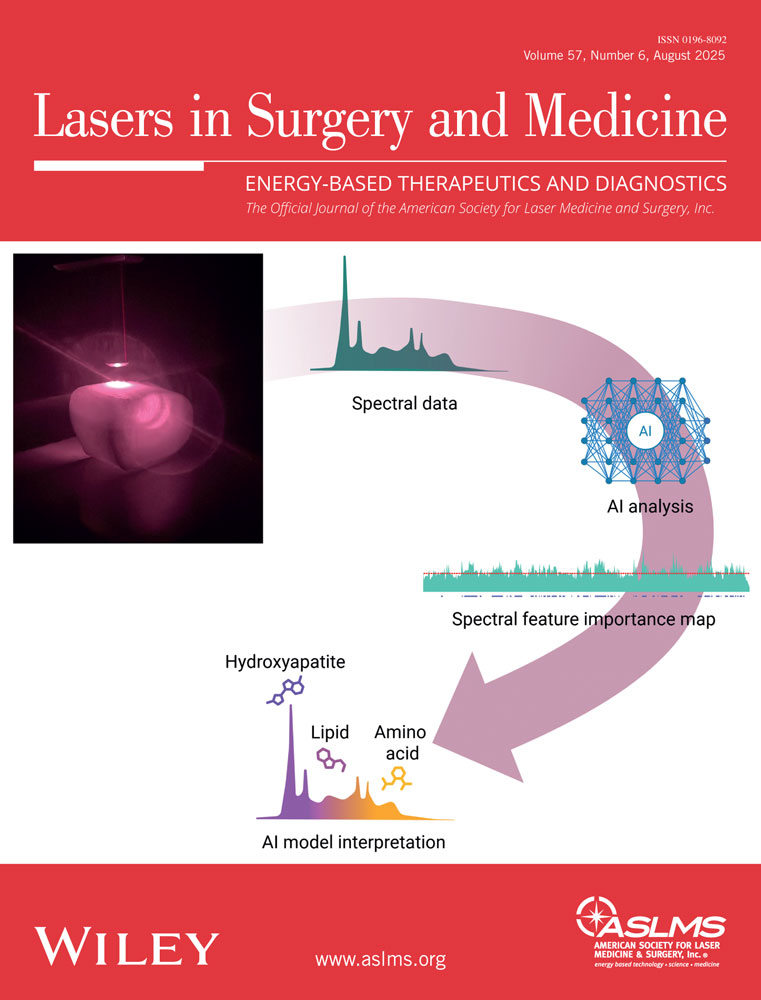Clinical testing of a photoacoustic probe for port wine stain depth determination
Abstract
Background and Objective
Successful laser treatment of port wine stain (PWS) birthmarks requires knowledge of lesion geometry. Laser parameters, such as pulse duration, wavelength, and radiant exposure, and other treatment parameters, such as cryogen spurt duration, need to be optimized according to epidermal melanin content and lesion depth. We designed, constructed, and clinically tested a photoacoustic probe for PWS depth determination.
Study Design/Materials and Methods
Energy from a frequency-doubled, Nd:YAG laser (λ = 532 nm, τp = 4 nanoseconds) was coupled into two 1,500 μm optical fibers fitted into an acrylic handpiece containing a piezoelectric acoustic detector. Laser light induced photoacoustic waves in tissue phantoms and a patient's PWS. The photoacoustic propagation time was used to calculate the depth of the embedded absorbers and PWS lesion.
Results
Calculated chromophore depths in tissue phantoms were within 10% of the actual depths of the phantoms. PWS depths were calculated as the sum of the epidermal thickness, determined by optical coherence tomography (OCT), and the epidermal-to-PWS thickness, determined photoacoustically. PWS depths were all in the range of 310–570 μm. The experimentally determined PWS depths were within 20% of those measured by optical Doppler tomography (ODT).
Conclusions
PWS lesion depth can be determined by a photoacoustic method that utilizes acoustic propagation time. Lasers Surg. Med. 30:141–148, 2002. © 2002 Wiley-Liss, Inc.




